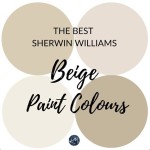Modern Tropical Interior Design: A Fusion of Comfort and Nature
Modern tropical interior design represents a stylistic convergence, carefully blending the relaxed, breezy aesthetic of tropical environments with the clean lines and sophisticated elements of modern design. This approach seeks to create spaces that are both visually appealing and functionally comfortable, evoking a sense of tranquility and connection to nature without sacrificing contemporary sensibilities. The core principle revolves around harnessing natural light, incorporating organic materials, and embracing a color palette inspired by tropical landscapes.
The successful implementation of a modern tropical interior hinges on a delicate balance. It avoids the pitfalls of overly thematic or cliché tropical decorations, such as excessive seashell motifs or overtly bright, saturated colors. Instead, it favors a more subtle and refined interpretation, focusing on quality craftsmanship, thoughtful material selection, and a judicious use of tropical-inspired accents.
Key Point 1: Embracing Natural Light and Ventilation
Natural light is paramount in modern tropical interior design. Large windows and expansive glass doors are essential features, allowing ample sunlight to flood the interior spaces. The goal is to maximize the connection between the indoor and outdoor environments, creating a seamless transition and blurring the lines between the two. This approach also promotes energy efficiency by reducing the reliance on artificial lighting during daylight hours.
Window treatments play a crucial role in controlling the intensity of natural light and maintaining privacy. Lightweight, airy fabrics such as linen or sheer cotton are preferred, allowing light to filter through while offering a degree of shade. Blinds or shutters, crafted from natural materials like bamboo or wood, can be used to further regulate light levels and provide added privacy as needed. The focus remains on maintaining a light and airy atmosphere.
Ventilation is another critical aspect, especially in warmer climates. Cross-ventilation, achieved through the strategic placement of windows and doors, helps to circulate air naturally and reduce the need for air conditioning. Ceiling fans, particularly those with natural wood or woven blade designs, contribute to air circulation while adding to the tropical aesthetic. Incorporating indoor plants also aids in air purification, further enhancing the health and comfort of the living space.
Key Point 2: Incorporating Natural Materials and Textures
The use of natural materials is a defining characteristic of modern tropical interior design. Wood, rattan, bamboo, jute, and stone are commonly employed to create a sense of warmth, texture, and connection to the natural world. These materials can be used in a variety of applications, from flooring and wall coverings to furniture and decorative accessories.
Wood flooring, particularly light-toned hardwoods like oak or ash, is a popular choice. These woods provide a neutral backdrop that complements the tropical aesthetic without being overpowering. Area rugs made from natural fibers like jute or sisal add texture and warmth underfoot. Walls can be clad in wood paneling, bamboo screens, or textured plaster to create visual interest and depth.
Furniture crafted from rattan or bamboo is a signature element of the style. These materials are lightweight, durable, and naturally sustainable, making them ideal for tropical environments. Upholstery fabrics should be chosen for their breathability and comfort, with natural fibers like linen and cotton being preferred. Leather can also be incorporated, but it should be used sparingly to avoid overheating the space. Incorporating natural textures such as woven baskets, clay pots, and handmade ceramics will further strengthen the connection to nature.
Furthermore, the strategic use of stone elements, such as a feature wall or fireplace surround, can add a grounding and sophisticated touch. Consider using locally sourced stone to further integrate the design with the surrounding environment.
Key Point 3: A Muted Color Palette with Tropical Accents
Modern tropical interior design favors a muted and calming color palette, inspired by the natural hues of tropical landscapes. Neutral tones like white, beige, gray, and soft greens form the foundation, creating a serene and airy atmosphere. These colors provide a versatile backdrop that allows tropical accents to stand out without overwhelming the space.
Accents of color are introduced through textiles, artwork, and decorative accessories. Think of the colors found in tropical flora and fauna: muted greens, blues, yellows, and oranges. These accent colors should be used sparingly and thoughtfully to create pops of visual interest without disrupting the overall sense of tranquility. Avoid using overly saturated or neon colors, which can detract from the sophisticated aesthetic of modern tropical design.
Green hues, ranging from soft sage to deep forest green, are particularly effective in evoking the lushness of tropical vegetation. Blue accents, reminiscent of the ocean and sky, can be used to create a sense of calm and serenity. Yellow and orange tones, inspired by sunsets and tropical fruits, can add warmth and energy to the space. Natural materials like wood and rattan will often be the main source of warmer hues.
The layering of textures and patterns can also add visual interest to a neutral color palette. Consider incorporating patterned cushions, throws, or rugs featuring subtle tropical motifs, such as palm leaves or geometric designs inspired by tribal art. However, it is important to avoid overuse of patterns, as this can create a cluttered and overwhelming effect. The goal is to achieve a harmonious balance between simplicity and visual interest.
Beyond the main color scheme, consider the impact of the surrounding landscape. If the interior space opens onto a garden, the colors of the landscaping can influence the interior colors. This creates a sense of visual continuity between the inside and outside, further enhancing the connection to nature.
Lighting also plays a role in how color is perceived. Warm lighting can enhance the richness of natural materials and create a cozy atmosphere, while cooler lighting can create a more modern and minimalist feel. Experiment with different lighting options to find the best balance for the space and the desired aesthetic.
Ultimately, the color palette should reflect the desired mood and atmosphere of the space. Keep in mind that colors can evoke certain emotions and associations, so choose colors that promote relaxation, tranquility, and a sense of connection to nature. The objective is to create a space that feels both comfortable and visually appealing, allowing occupants to relax and unwind in a serene and inviting environment.
The principles of modern tropical interior design go beyond mere aesthetics; they embrace a holistic approach to creating living spaces that are both beautiful and functional. By prioritizing natural light, ventilation, and materials, it fosters a sense of well-being and connection to the environment. The careful selection of colors, textures, and furnishings further enhances the overall experience, resulting in interiors that are both inviting and inspiring. While design trends may evolve, the underlying philosophy of creating spaces that celebrate nature and promote relaxation remains timeless.

Tropical Design Décor Ideas For Your Home Flooring America

Designing A Modern Tropical House Edward George

Tropical Minimalist

Tropical Style Interior Design

Tropical Interior Style Principles Of Creating A Wallmur

This Tropical Minimalist Home By Valencia And Go Stands Out In Iloilo

What Is Modern Tropical Interior Design Tips And Ideas Orange Moon Interiors

Modern Tropical Minimalist House By Studio Mk27 Interiorzine

Tropical House Jaque Studio Archdaily

5 Characteristics Of A Tropical Modern House Architropics
Related Posts








